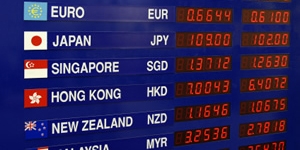
US CPI data were close to market expectations, confirming that the impact of higher tariffs is beginning to lift inflation. Headline inflation rose 0.3% m/m, driving the annual increase up three-tenths to 2.7% while the ex-food and energy measure rose 0.2%, seeing the annual increase tick up to 2.7%. For items where tariffs have been imposed, there was visible sign of higher inflation, including toys, household furnishings, sports equipment and appliances all inflating at multi-year highs.
In terms of weak inflation forces, reduced travel to the US has resulted in sustained lower airline fares and another fall in accommodation services. This also reflects lower domestic travel, as US consumers cut back on discretionary spending. For the same reason, new and used car prices fell. Rents continue to rise at a moderate pace, consistent with the soft housing market.
In terms of market reaction, after the market had fully absorbed the data, rates moved higher, consistent with a message that the data reduced uncertainty about the monetary policy outlook to the extent that the data provided confirmation that higher tariffs are leading to higher inflation. Richmond Fed President Barkin, speaking after the release, noted that more price pressures are coming from tariffs. The market trimmed the extent of rate cuts priced into the curve for this year to 44bps (from 49bps yesterday). US Treasury yields are higher across the curve. The 2-year rate is up 5bps for the day to 3.95%, the 10-year rate is up 5bps to 4.48% and the 30-year rate is up 4bps, breaching the 5% mark.
Not surprisingly, President Trump thought the inflation data were weak and called on the Fed to cut by “3 points”, presumably meaning 300bps, not 3bps. On tariffs, Trump said he had reached a trade deal with Indonesia, imposing a 19% tariff, lower than the threatened Liberation Day tariff of 32%. Of note, Trump said “if there is any transshipment from a higher tariff country, then that tariff will be added on to the tariff that Indonesia is paying”. This is a similar clause to the Vietnam deal, to avoid China transhipping goods through other countries, and they are likely to become the norm.
Canadian CPI data were in line with expectations, with annual inflation rising two-tenths to 1.9%. The average of the trimmed mean and median core estimates rose 5bps to 3.05%. The data added to market conviction that the Bank of Canada would not cut rates at its meeting at the end of the month and Canadian bond yields rose 7-9bps across the curve, a greater lift than seen in the US, supporting CAD against backdrop of broad USD strength.
The USD is up 0.4% for the day, with all of the gain coming after the US CPI print. Against a backdrop of higher global rates and ongoing nerves ahead of the 20-July Upper House election, JPY has underperformed, seeing USD/JPY reach 149. NZD/JPY rose to 88.9, its highest level since January, before backing off a little to 88.6.
NZD/USD fell towards 0.5940 after the US CPI release, where it has found some support over the past few hours. The AUD fell towards 0.65 and NZD/AUD is flat at 0.9125. EUR fell below 1.16 and NZD/EUR is relatively flat at 0.5125. NZD/GBP is also relatively flat at 0.4445.
Equities market performance has been mixed. The Euro Stoxx 600 index fell 0.4%. The S&P500 is currently flat after a strong open. Most sectors are weaker, with the index propped up by strong gains in IT stocks. This has seen the Nasdaq index rise 0.6% to a fresh record high. Nvidia is up 4% to a fresh record high after a backdown from the US government, after officials said it would approve export licences of its H20 AI chip to China. This could all be part of the deal with China last month (publicly announced, but for which no details have been released), where the US loosens IT-related export restrictions to China in return for China allowing more sales of rare-earth minerals to the US.
The US earnings season kicked off. We’ll spare the details but suffice to say market reaction suggests very mixed results, with share prices of Wells Fargo and Blackrock down 5-6%, JP Morgan barely lower, and Citigroup up 5%. A prevailing message was that there were no alarm bells for the consumer sector, with signs of some resilience.
Yesterday, China GDP data released for Q2 were solid, with growth continuing to run ahead of its annual 5% growth target. Less encouraging, there were continued signs of a two-speed economy, with strong exports against a backdrop of sluggish domestic demand (not helped by the deep downturn in the property sector), evident in the trade surplus pushing up to a fresh high of 6% of GDP.
The domestic rates market showed a 1-3bps lift in NZGB yields, while swap rates were up 1bp across the curve. We might see a bit more price action today, with Australia’s 10-year bond future up 4bps in yield terms since the NZ close.
On the economic calendar today is UK CPI and US PPI inflation data. The Fed also releases its monthly Beige Book, which will give timely anecdotal updates regarding growth and inflation pulses in the economy.

We welcome your comments below. If you are not already registered, please register to comment
Remember we welcome robust, respectful and insightful debate. We don't welcome abusive or defamatory comments and will de-register those repeatedly making such comments. Our current comment policy is here.